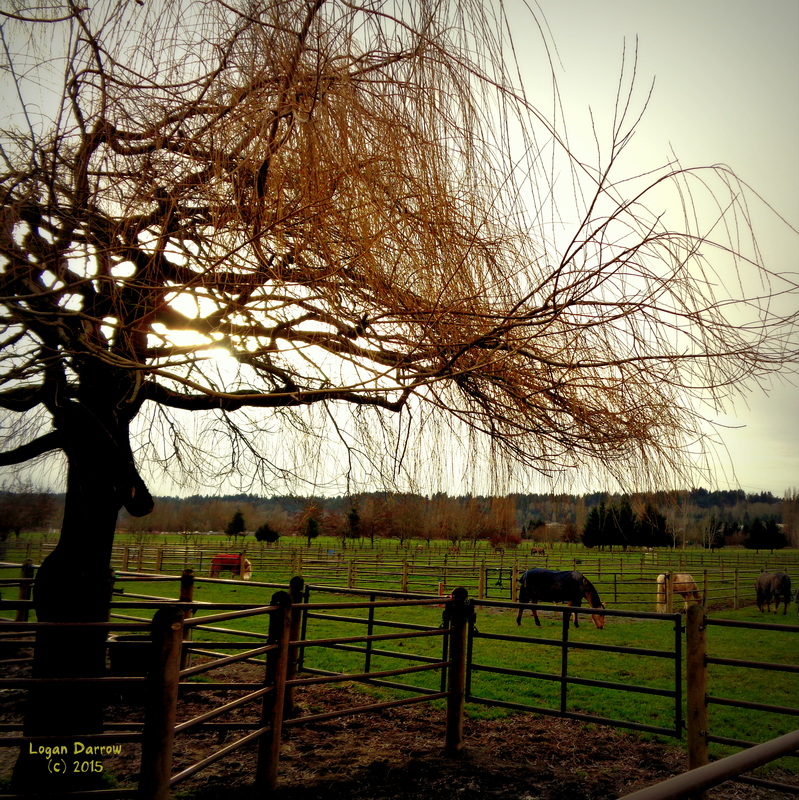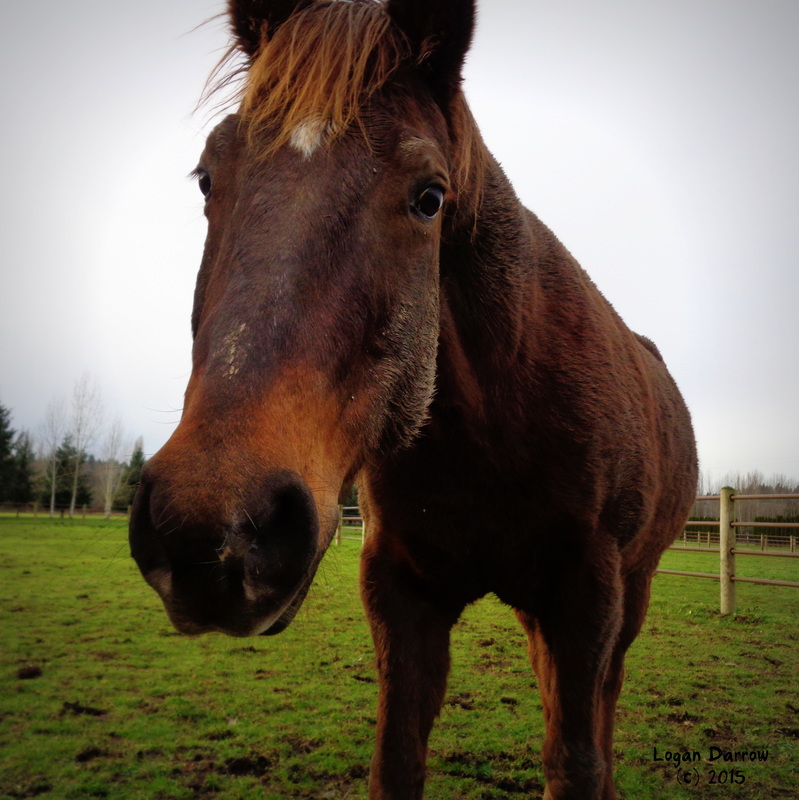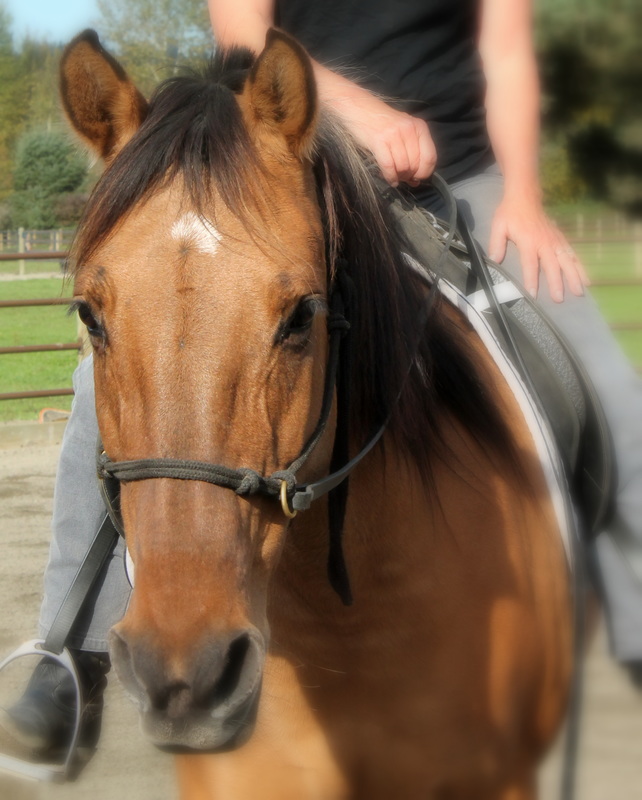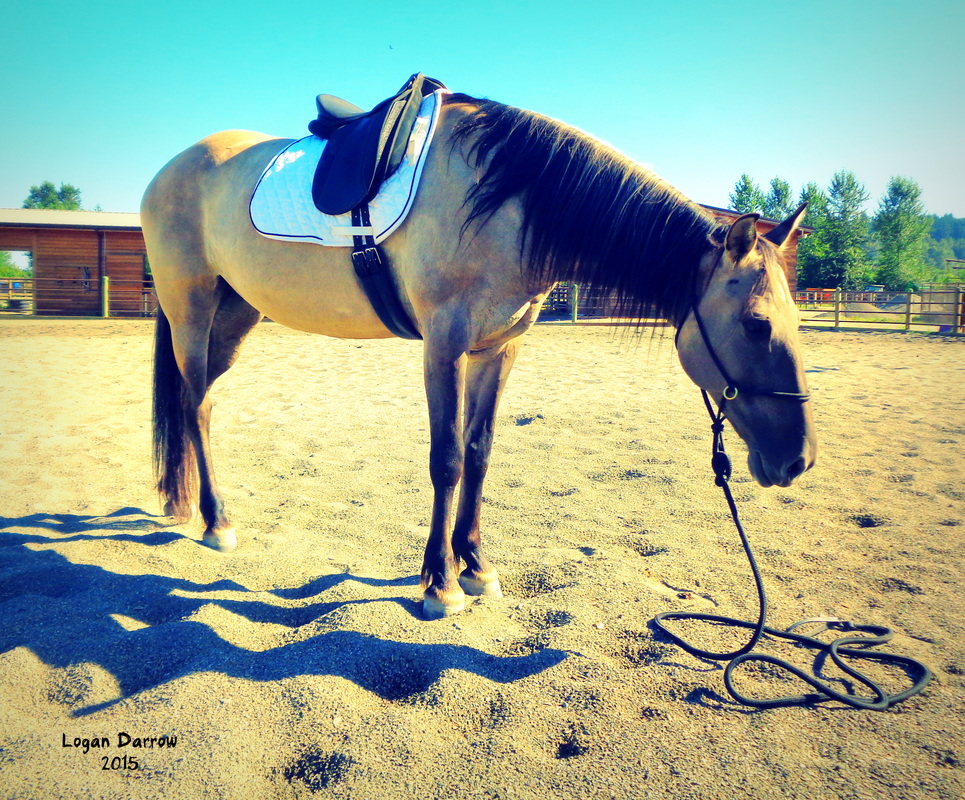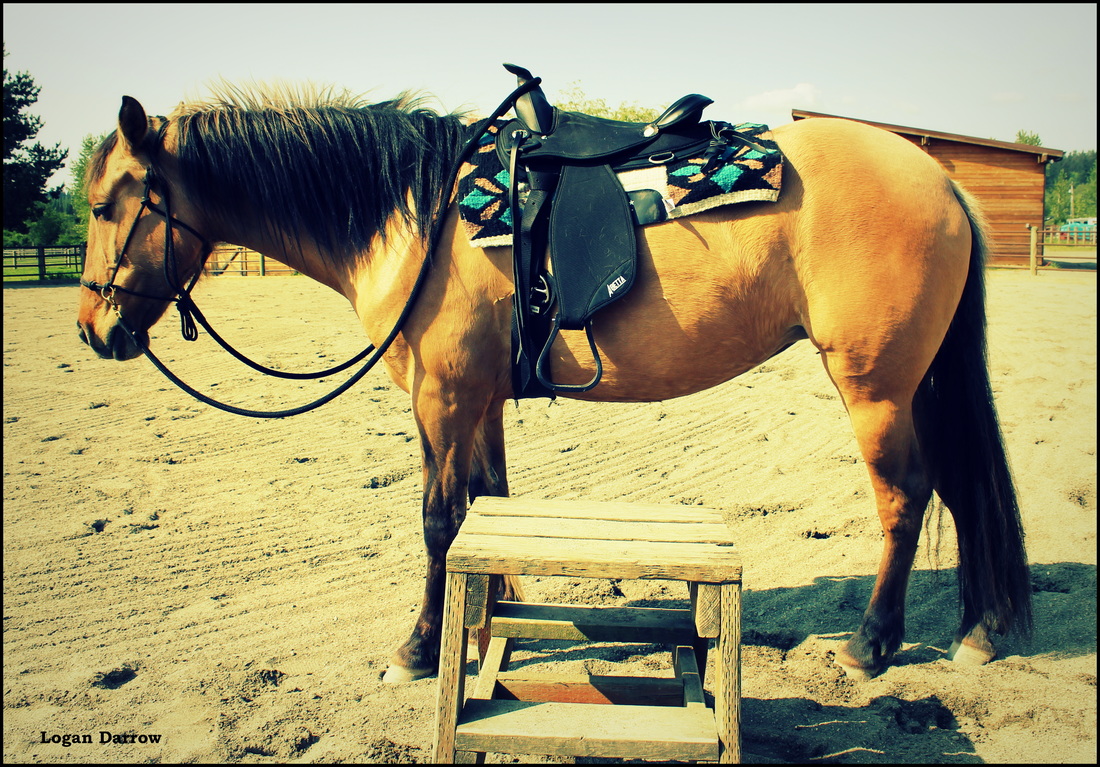Musings on Focus, Destination Addiction and the Benefits of StressThe video above accompanying the following essay comes from a 45 minute session with me and my horse Willow edited down to about two and a half minutes. At the one minute mark we had a breakthrough. It might not look very exciting on the surface, but I’m not looking for “exciting” I am looking for change, which can come in subtle ways.
0 Comments
Tips on Replacing Judgementalism with BondingDo you get frustrated when you are around other horse people, such as when you’re at your boarding stable, or participating in equine events with friends and/or strangers? Do you see poor horsemanship in action and you know a better way? Well here are five words that will help remove the stress that other horse people are causing in your life: Let Them Have Their Thing Yup – the next time you see someone being dragged away from the barn by a horse with no manners; the next time you find yourself wincing at someone getting a bad lesson from an alleged instructor; the next time you see someone bouncing in the saddle and using their reins for balance . . . let them have their thing. DISCLAIMER – PLEASE READ: this is not about cruelty and animal abuse. If you witness animal cruelty or abuse please report it to your local authorities. What do want to do with your horse? Do you enjoy training, competing, trail riding? Whatever it is, we can assume you have chosen it because it gives you joy, even passion. Your horse is important to you! When we look around our equine environment, we see other people who are somewhat or maybe even very much like ourselves – their horses are important to them, too. Horse Time Should Not Be Chore Timechore CHôr/ noun
My mother was a skilled and talented gardener. Flowers of all varieties bloomed spring, summer and fall in the borders and beds around her house; a vegetable garden overflowing with tomatoes, lettuce, beans and herbs helped to grace the dinner table. She was also a gifted artist, and flowers were among her most favorite subjects; she painted big colorful bouquets of iris, poppies and hydrangea. You would think this opportunity to nourish such beauty would bring her joy, but frequently that wasn’t the case. The garden always needed tending; weeds needed to be pulled, shrubs needed to be pruned, mulch needed to be put down, vegetables needed to be harvested – it was stressful for her and made her discontented. There was no one telling her that she wasn’t doing it right, or that she needed to work harder at it, in fact she received many compliments, but still – it was a chore that somehow robbed her of something - it couldn’t be just fun for its own sake, there had to be a price to pay. For me, the saddest part of all is that this was self-inflicted: she wielded full control over her situation and she could have chosen to be joyful, but she didn’t. She CHOSE to make flower gardening, of all things - stressful. In our current century, in our First World lives, horses are not a necessity for most people. Unless we are old time farmers or cattle ranchers, horse ownership is a hobby or a sport. Like flower gardening, participation is 100% voluntary. So why do so many people get angst-ridden, frustrated and even angry about something they could stop doing at any time? How to Regroup and Keep Improving with a Challenging HorseWhen working with horses, sometimes in order to go forwards, we have to go backwards. With my troubled mare Willow, it can feel like one step forward, then two steps back. Because she is a highly anxious horse with a history of dangerous bucking and spooking, I have spent a long time doing groundwork with her. Eventually, I was able to get on her bareback from the fence with no issues. Then I progressed to getting her OK with a saddle on, and then finally the big day came; I was able to put my foot in the stirrup and swing my leg over. And what happened – nothing. Well, I breathed a big sigh of relief, because all the stories I had been told about her had messed with my head, and I was worried she might explode. But after the relief wore off, I soon discovered something I didn’t expect: Miss Willow "Doesn't Like to Walk During Groundwork, Only Trot" had no forward under saddle. So now that I was on, I had to get forward, and to get forward I would have to put pressure on Willow. She seemed fine. We spent a couple of sessions poking around the arena with me in the saddle, and even stood quietly next to the fence soaking in the attention from people who knew her history and were giving her pets and congratulations for being a quiet horse with a rider on her back.
But a quiet horse isn’t necessarily a safe horse, and something niggled at the back of my mind; she didn’t seem calm so much as resistant to going forward ~ unlike the horse I was used to on the ground, who would move her feet at the lift of a finger. A MUST READ for horse lovers!By Dr. Stephen Peters & Martin Black
What happens when you pair up one of America’s most talented horsemen with a neuroscientist who is an expert on the structure and working of the equine brain? You get a book that is a must-read for anyone who wants to understand horses better. This is a true source of real information, validated by science, written to help anyone who loves these wonderful animals that share our lives. If you’re looking for “best practices” in horse training, this is it: empirical evidence proven to work in actual practice, not just theory. Because this is primarily a science book, I thought it might be a text book over my head, but not at all. Dr Stephen Peters’ chapters about how the horse’s brain works are clearly written. Martin Black’s contributions discuss real life situations gleaned from his decades of hands on experience starting hundreds of horses. Numerous photographs contribute to the content and there is a glossary to help with the scientific terminology. What does this have to do with horses? Nothing, really.But it does have something to do with mindfulness. If a piece of Tupperware falls down on my head every time I go into the pantry to get a can of beans, I need to fix that because it’s just plain stupid. And if my husband accuses me of saving more glass jars than Howard Hughes, I might have a problem because . . . ewww. Why WAS I saving glass jars? Adams 100% Natural Peanut Butter jars to be exact, plus a few odd sized pickle jars and such. Some of them I use for storing things like nuts and candy. But if my family goes through one jar of peanut butter per week, in one year I would have about 45 more empty jars than I could ever use or have room for, and anyway if I ever really did need another jar, it’s just a few more slabs of peanut butter toast away. This guest post will guide you away from misinterpreting your horse's behavior, and help you improve your training methods. By Tony Haines I am blessed to work with horses of all different breeds and disciplines. Either starting their education under saddle, or helping them with various issues, or helping owners get along a little better with their horse. I am also blessed to occasionally be asked to teach clinics. I don't call them horsemanship clinics, because they are equally as applicable to the Natural Horsemanship student, as they are to the aspiring cross country super star (and the term can seem to bias prejudice even though any interaction with a horse is horsemanship). They are not broadly applicable because I am great at any of those disciplines, but because I focus on teaching people to hear their horse's side of the story (and why what they do that works, works; and why what they do that doesn't always work, doesn't always work). A side of the story that is often encouraged to be completely dismissed by less empathetic or less thoughtful trainers, educators and coaches. One of my pet hates in this industry is the "don't let the horse win" mentality. Why shouldn't it win? We love them don't we? Yes of course we do, but there is a little extra difficulty in getting the horse to feel like it is winning when doing what we ask, and it requires that we see things from their point of view, based on how the horse has evolved to think and feel, not how the human wants to do things. Tony Haines
Horses were said to have come into existence about 55 million years ago, as a small animal around the size of a dog, with toed feet. They evolved quite successfully for millions of years, but relatively recently (I'm thinking less than 100,000 years ago, but my memory may be eluding me), their numbers began to drop rapidly. Nearly all species of horse were sent extinct, except for a very few ancestors of the modern horse. So why did the modern horse survive, when others that had been evolving successfully for many millions of years did not? Research of fossil's suggest it is because the modern horse is basically extremely paranoid and extremely agile. Guest blogger Lysette Marie joins forces with trailer loading expert Katie Richards to show us the best way to teach a horse to load into a trailer.A few weeks ago, while on a trip to the UK, I was lucky enough to be able to watch my British friend Katie Richards teach a horse to load onto a trailer. It was a rainy afternoon, and I sat in the front seat of the car snapping photos of Katie working with the horse, while our friend Lysette Marie took detailed notes. There are few things more distressing than several people trying to force a terrified horse onto a trailer using whips and ropes. THERE IS A BETTER WAY! The best part of watching Katie teach a horse to load was her excellent narrative of what was happening literally at every step. Lysette has turned her notes into an excellent and informative description of Katie's kind, thoughtful and EFFECTIVE methods, and has kindly allowed me to publish them here on my blog. "My Horse Won't Load" by Lysette Marie photos by Logan Darrow No matter what discipline you ride, which breed of horse you deal with, chances are that you probably know of a horse that won’t load. Whatever the reasons behind this behavior, most horse owners will agree that this is a frustrating and somewhat enigmatic issue that has disrupted and sometimes even cancelled their plans. Note that I say ‘most’ horse owners; because believe it or not, there are some people out there who actively embrace this issue and glean a sense of enjoyment from solving it! Katie Richards of Cornwall Performance Horsemanship is based in Penzance, Cornwall. She is a freelance horse trainer who has hosted her own horsemanship clinics and clinics for other trainers with a similar philosophy, such as Warwick Schiller.Katie says “The techniques I use help the horse to reach a point where he feels safe to think, not react.”. Being that trailer loading is her specialty, it was Katie I went to when I wanted to learn how to fix loading problems- this article is a depiction of what I learned from her one rainy afternoon. Katie Richards Katie’s subject was Rocco, a very nicely put together 2yo Belgian WB X, who was due to be moved to a different stable that afternoon. After a brief groundwork session, it became clear that he was a well minded individual with whom his owner Fay Panter had done an excellent job, aside from a few small but significant issues, and it was those significant issues that were exacerbating his trailer loading problem. Katie spent the first 20 minutes establishing the basics such as personal space and yielding to pressure ; this got Rocco’s brain engaged and taught him that whatever Katie was asking of him, he could find a ‘sweet spot’. This is because the ultimate aim was for him to view the trailer as the sweet spot, however this wouldn’t happen if Rocco didn’t realise he could search for a sweet spot in the first place. Once this was established, we brought the trailer into the equation… As you can see, Rocco was initially suspicious yet curious. Though not convinced he could put his front feet on the ramp, his head was frequently lowered towards the ramp and he gave it a sniff. Katie stood still, allowing him to weigh everything up. When Katie adjusted her posture slightly, Rocco spooked at the noise her feet made on the ramp- her solution to this was to stamp and jump on the ramp until he became comfortable with it and realised it wasn’t going to kill him. This also meant that when he decided he was comfortable enough to place his own foot on the ramp, he wouldn’t be spooked by the noise and so he would be adequately prepared to take that next step.
Often we are told, if we are to be horse trainers, to leave our emotions at the gate. But sometimes it happens that we ARE the gate. Not an ordinary gate, but a sluicegate, holding back the tides and the incoming waves. And not just our own waves, but the rushing streams and confluences of a whole family. A family with its original center dead and gone, leaving the survivors adrift now and again, dealing with and accepting that those we loved SO MUCH who have died before us aren’t coming back. Where we find our strength is in understanding that now it’s our turn to be the heartbeat of our own family, be it blood relatives or a family we have built ourselves.
An Excellent Source for Developing Comfortable, Competent RidersI don’t teach horseback riding, but I really admire those that do, especially those who teach beginning riding, as a good start in anything is so important. Being good at something is one thing; being able to teach that skill to others requires a special gift, and Gincy Self Bucklin was blessed with that gift. Her book “The Gentle Art of Horseback Riding” is a must have for riders at all stages and abilities, as well as a textbook quality reference for riding instructors. Let me start out my review by noting that Gincy Bucklin is my aunt, but I don’t think this makes me biased – it makes me lucky! And I can personally guarantee that not only is she a top notch horsewoman, she genuinely wants people to be successful and happy with their horses, and for horses to be successful and happy with their riders. "Hands on experience is the best teacher, and Gincy transmits this knowledge and experience through The Gentle Art of Horseback Riding" ~ George H. Morris ~ Right from the beginning in the preface, Gincy makes sure that riders understand that unlike sports that use balls and other equipment, a horse is not an inanimate object – our errors as riders can damage a horse. Riding done well must be comfortable for both horse and rider, and the horse has a contribution to make as a teacher. Click on Read More below the photo to learn more. This charming childhood photo of Gincy Bucklin having fun with her Shetland pony stallion "Shoebutton" is from my personal collection of Self Family photos.
Start Your Day Focused and BalancedWhat does meditation have to do with horse training? Well, for me, meditation has to do with everything. It’s the first thing I do after breakfast. If I skip it for some reason, the rest of the day feels slightly “off.” Two or three days in a row without meditation, and I am sliding down into irritability mixed with lethargy – not a very good state to be in. And we don’t want to be working with an animal that weighs half a ton if our emotions and energy are not at their peak performance levels. In meditation we discover our inherent restlessness. Sometimes we get up and leave. Sometimes we sit there but our bodies wiggle and squirm and our minds go far away. This can be so uncomfortable that we feel it’s impossible to stay. Yet this feeling can teach us not just about ourselves but what it is to be human ~ Pema Chödrön ~ But - you say - I’ve tried it, it didn’t work, I can’t sit still, I can’t shut my mind off, I don’t have time. Please read the Pema Chödrön quote above again, it's perfectly normal to have that experience. And I’m going to call bullshit on the “time” objection by including several ten minute guided meditations in my list – and if even ten minutes is too long, you can find five and even three minute meditations on YouTube. As for shutting your mind off, don’t worry about that. These are guided meditations, just listen to the voice, if you mind wanders off ~ it wanders off ~ just let it come back again. If you don't like the voices, YouTube has anything you want instead: classical music, bells, singing bowls, water, rain, ocean waves - whatever helps you to just take a little vacation in your mind, so you can continue on with your day mentally and emotionally refreshed. There are no meditation police coming to get you for doing it wrong. There is no right and wrong, there is just the DOING that matters. Click on Read More below to go to the list. Note: don't ponder on this Voltaire quote for too long, I just chose it because I thought it might make me sound smarter than I am. And How I’ve Been an Inconsiderate AssI leave my crap all over the place at the barn. My grooming tote gets left by the round pen. I leave my trail saddle on the arena fence, and my dressage saddle on the stall door next to my tack locker. My halter and lead ends up hanging on any of a dozen random fence posts. My crop gets dropped on the ground in the arena, my water bottle abandoned on the mounting block, my sweatshirt flung on another random fence post. I have left my sunglasses next to the sink in the kitchen area, and my bucket and sponge next to the hose. At one time or another, all of these items have been misplaced, by me, and would likely be lost forever except for some unkown fairy godperson picking them up and putting them someplace safe. My mother used to tell me I would lose my head if it wasn’t screwed on tight. How Meditation can Improve Your Relationships with HorsesA frequent topic discussed on horse training groups is “I know I am supposed to leave my emotions at the door, but I have trouble not getting frustrated with my horse. How do I keep from getting frustrated? All sorts of good answers are usually given in the replies: reminders that it is not the horse’s fault, that training is a process, don’t take it personally, expectations are the cause of frustration, progress is being made even if we don’t see it, forgive yourself your mistakes, get someone to help you. Again, all good answers for people who find their blood pressure rising when things aren’t going well with their horse. But what if we had no feelings of frustration or anger that had to be fixed in the moment? “An ounce of prevention is worth a pound of cure” so why not calm our emotions before we even start. How do we truly leave negative emotions at the door, or more exactly, at the arena gate. The horse* is not the source of your frustration – you are the source. You carry that frustration within you, like a seed. You know this intellectually, you just have to learn it emotionally too. Trainer and clinician Warwick Schiller tells us “The horse needs to know the answer before we ask the question.” This means: we can’t expect a horse to respond correctly to something we ask him to do unless we have TRAINED that response first. We can train our emotions in the same way. “Our emotions need to know the answer before we ask the question,”
the question being, “Things aren’t going the way you want them to go – how do you feel about that?” General Lee's Favorite War HorseYes there are, or rather were, two “L’s” in Traveller, which was the English spelling back when people were writing about him. And what a memorable horse he was, as there are many anecdotes and descriptions of Confederate General Robert E Lee’s favorite war horse. We know not only what he looked like, but how he behaved and what he meant to the humans who knew him.
He was born in Greenbrier County, in what is now West Virginia, and as a colt, he took first prizes at the local fair. He was purchased for $175 (approximately $5,000 today) in 1861 while General Lee was commanding a small force in Western Virginia and at that time was named “Greenbrier.” There are numerous paintings and photographs of Traveller that leave no doubt that he was physically beautiful; a gray American Saddlebred with a dark mane and tail, 16 hands tall. Compactly built, with almost a Spanish horse body shape, not long and lanky. He was an immediate success, as Major Thomas L. Broun recalled: “He was greatly admired in camp for his rapid, springy walk, his high spirit, bold carriage and muscular strength. He needed neither whip nor spur, and walked his five or six miles an hour over the rough mountain roads of West Virginia with his rider sitting firmly in the saddle and holding him in check by a tight rein, such vim and eagerness did he manifest to go right ahead as soon as he was mounted.” Oh – ouch. Ridden in a leverage bit on a tight rein at all times. Makes me wince. But this isn’t an attack on General Lee or horse trainers of that time who did things differently than we do. Saving a Shut Down HorseCrystal Messer wanted to buy a safe, reliable trail horse, and she thought she found what she was looking for on line: a lovely big bay and white paint/draft cross named Ace. He was advertised as a horse that would willingly go out on the trail, and had even been entered in trail competitions. She was able to see photos and videos of him in action; he didn’t spook, buck, kick or rear. She was unable to travel from her home in Arizona to North Carolina in order to ride him herself, but she did all the homework she could to determine that Ace would be a good match for the lifestyle she planned to share with him. Then she experienced one of the worst things that can happen to a new horse owner; the horse that she purchased, when unloaded off the trailer at her house, bore little resemblance to the horse that was advertised. Ace meets Warwick Schiller for the first time in 2015
How to recognize and fix it.The definition of “destination addiction” as it applies to human beings is: a preoccupation with the idea that happiness is in the next place, the next job and with the next partner. Until you give up the idea that happiness is somewhere else, it will never be where you are. Another name for this behavior issue might be the “if only” syndrome. If only this was different, if only that would happen, if only that other person would change. While horses don’t have the intellect to embrace the “idea” of happiness, they know what feels comfortable to them and what doesn’t, and they experience equine destination addiction with commonly seen manifestations such as “gate addiction,” “buddy sour,” “barn sour,” etc. They can suffer from anxiety and they are thinking if only I could get to the gate, or if only I could get back to the barn, or if only I could go stand near that other horse, my anxiety would go away. In other words, there is someplace else they would rather be than Here and Now, with us, their owners and riders. The palomino horse doesn't want to be away from his buddy, the paint horse.
. . . . from my notes at a Warwick Schiller clinic.In the round pen during groundwork, or in the saddle in the arena, if the horse moves out without waiting to be asked, that is anticipation that is undesirable and can even be dangerous. When the rider has one foot in the stirrup and is only halfway on is NOT when the horse should decide it’s OK to start walking off. (Yes, this is acceptable for many people, but not for me. If a horse can’t control himself at the standstill, why would I expect him to control himself at the walk, trot or canter?)
But there are other times when we want our horse to anticipate. If he canters at the sound of a kiss, it is because he learned through anticipation that a backup application of leg or whip will result if he doesn’t pick up the canter. At his 2016 clinic in Mesa, Arizona, Warwick Schiller explained the difference between the two forms of anticipation, and how to prevent the “bad” one and create the “good” one. This was a concept totally new to me, and as usual with everything that Warwick teaches, it's based on common sense and keen observation of equine behavior. My notes on this are only a couple of sentences long, so I have tried to expand a bit to encompass what I learned while watching and listening in person. One HELL of an Endurance Horse |
Your email address will be kept private.
Email me directly at
[email protected] 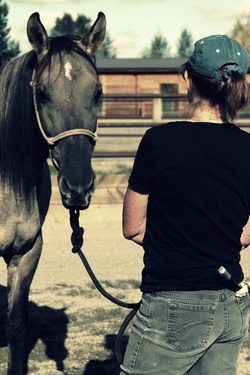
Archives
September 2018
Categories
All
|
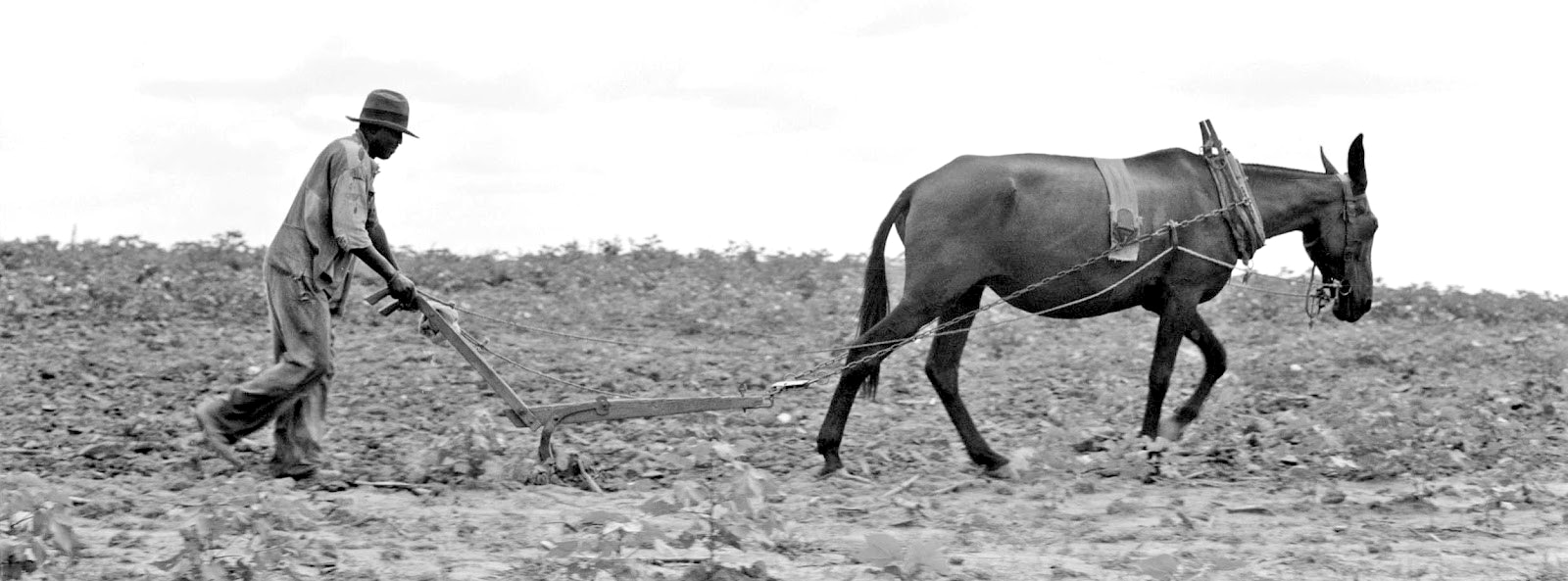
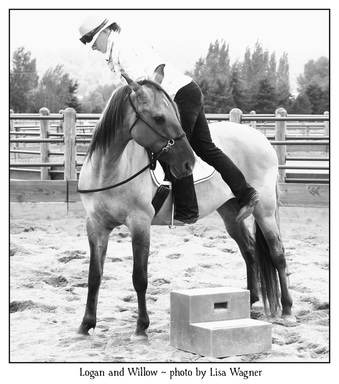
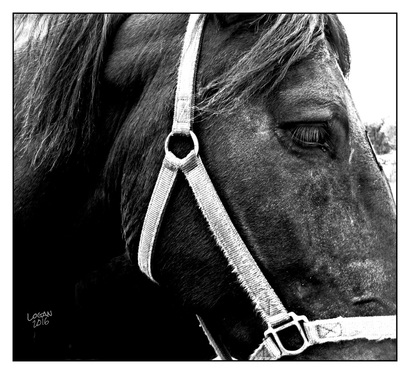
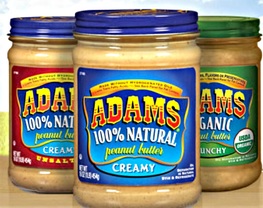
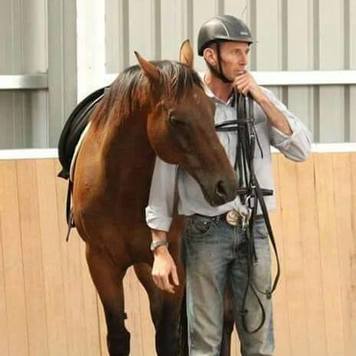
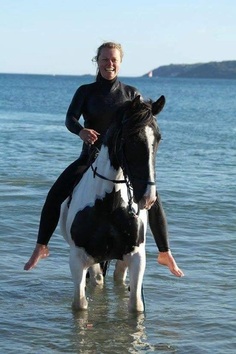
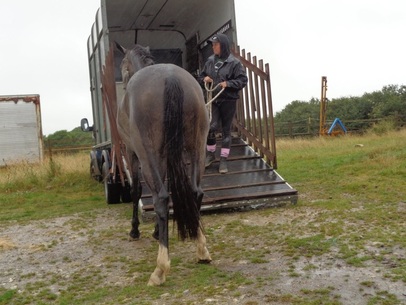
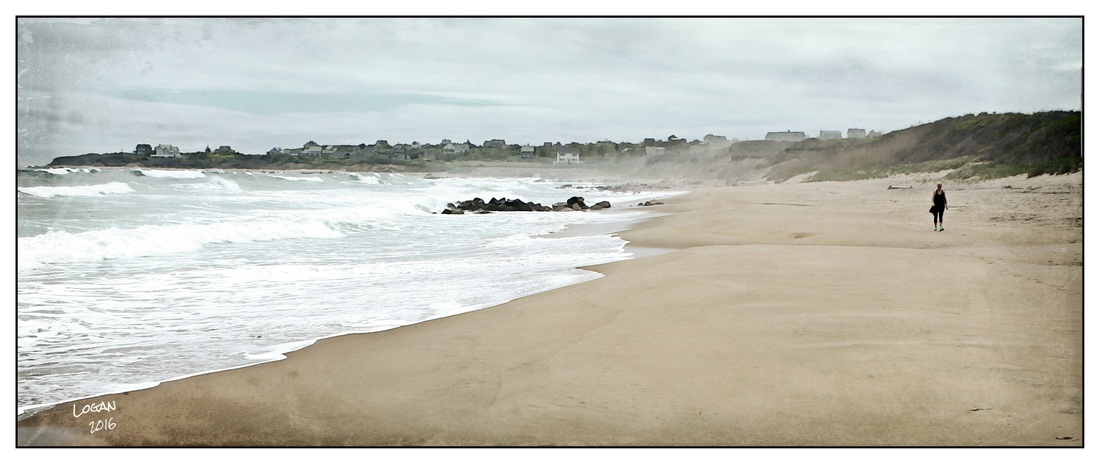
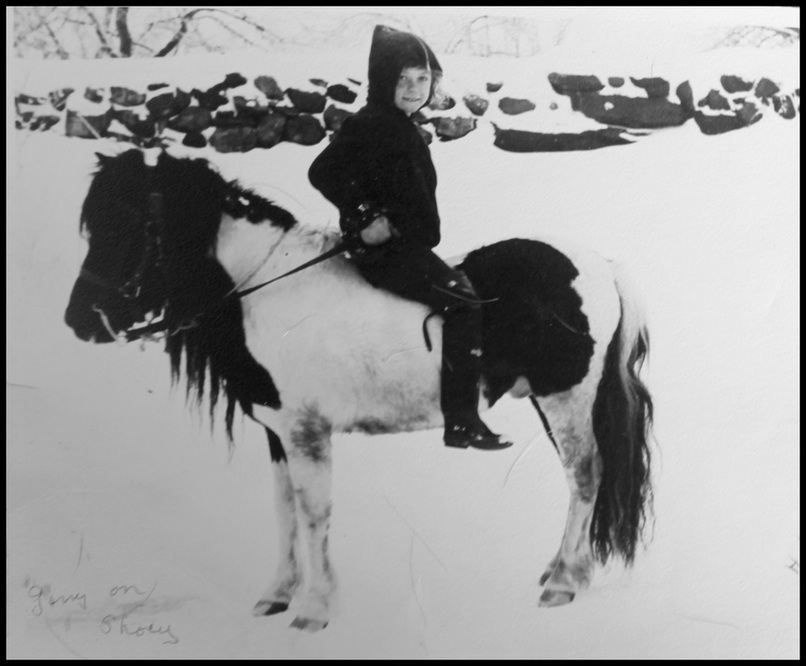
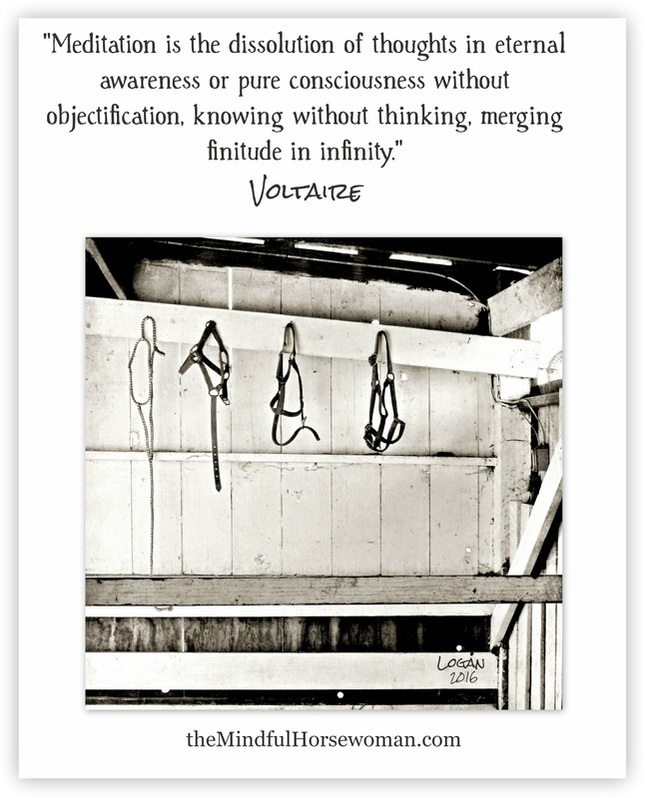
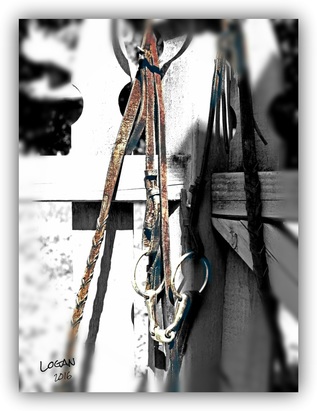
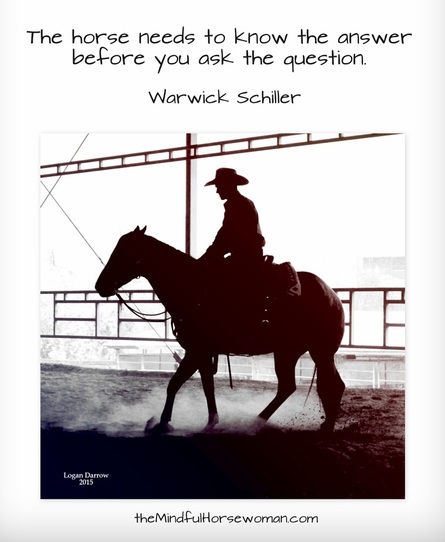
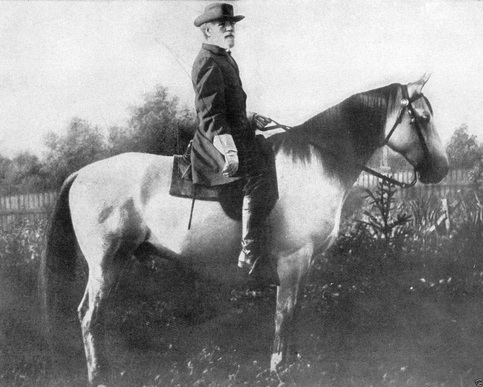
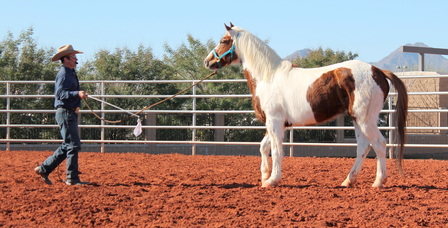

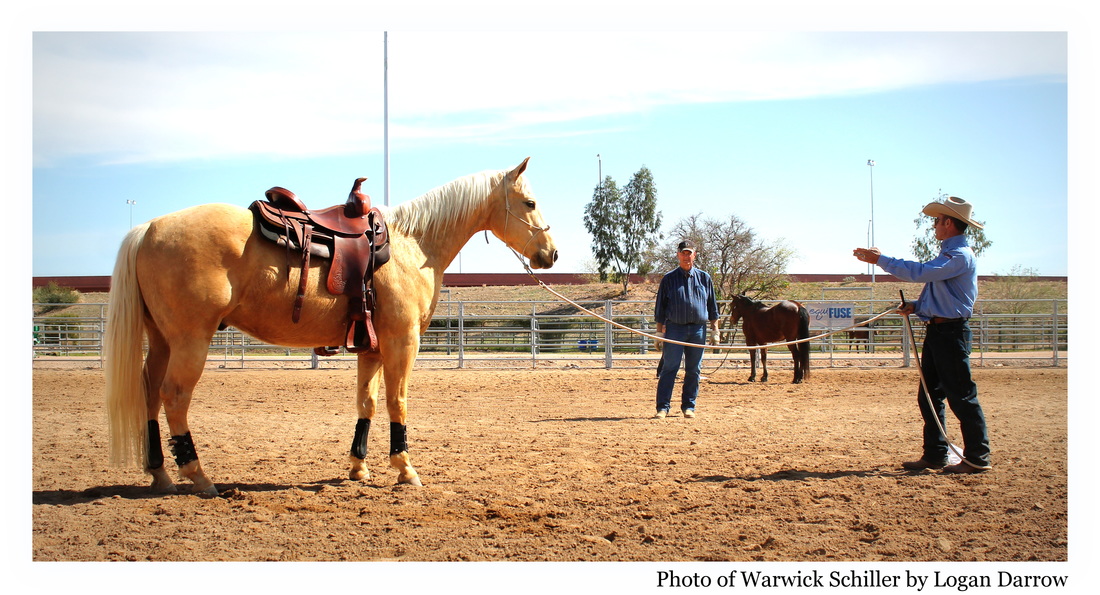
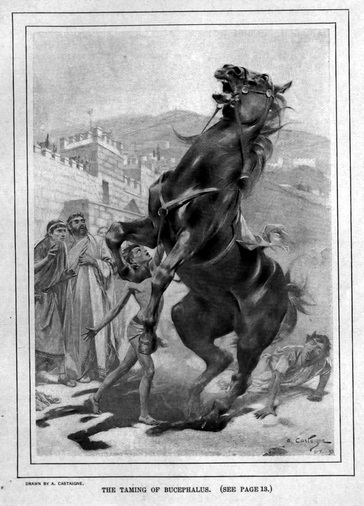
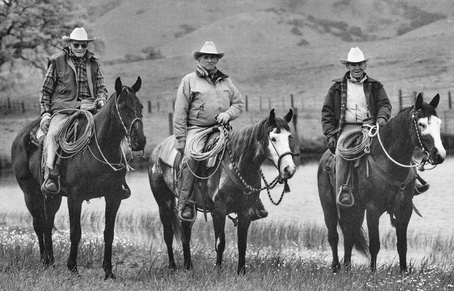
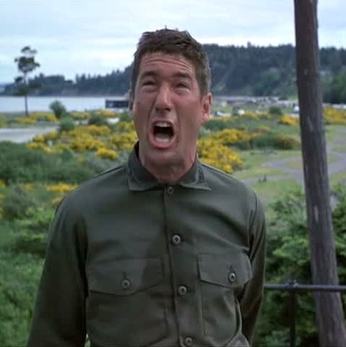
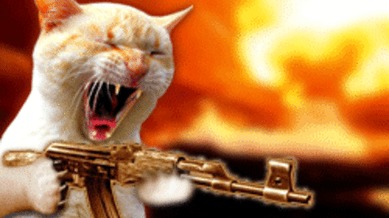
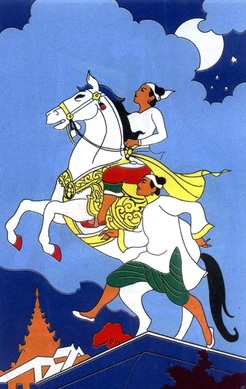
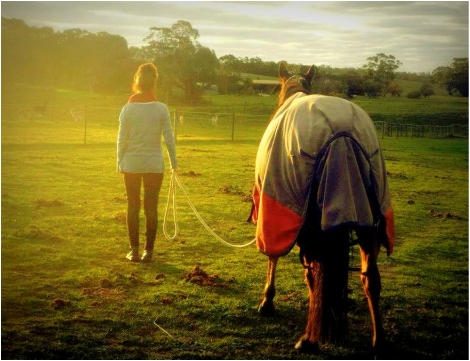
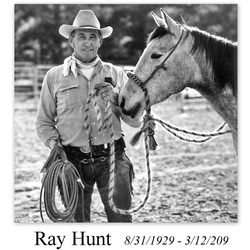
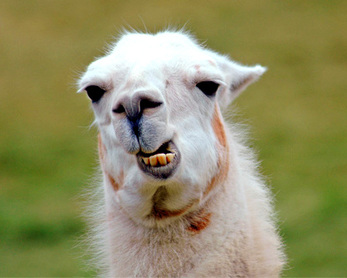
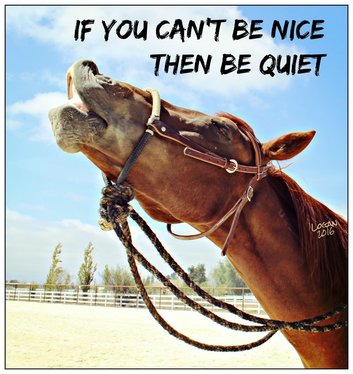
 RSS Feed
RSS Feed
